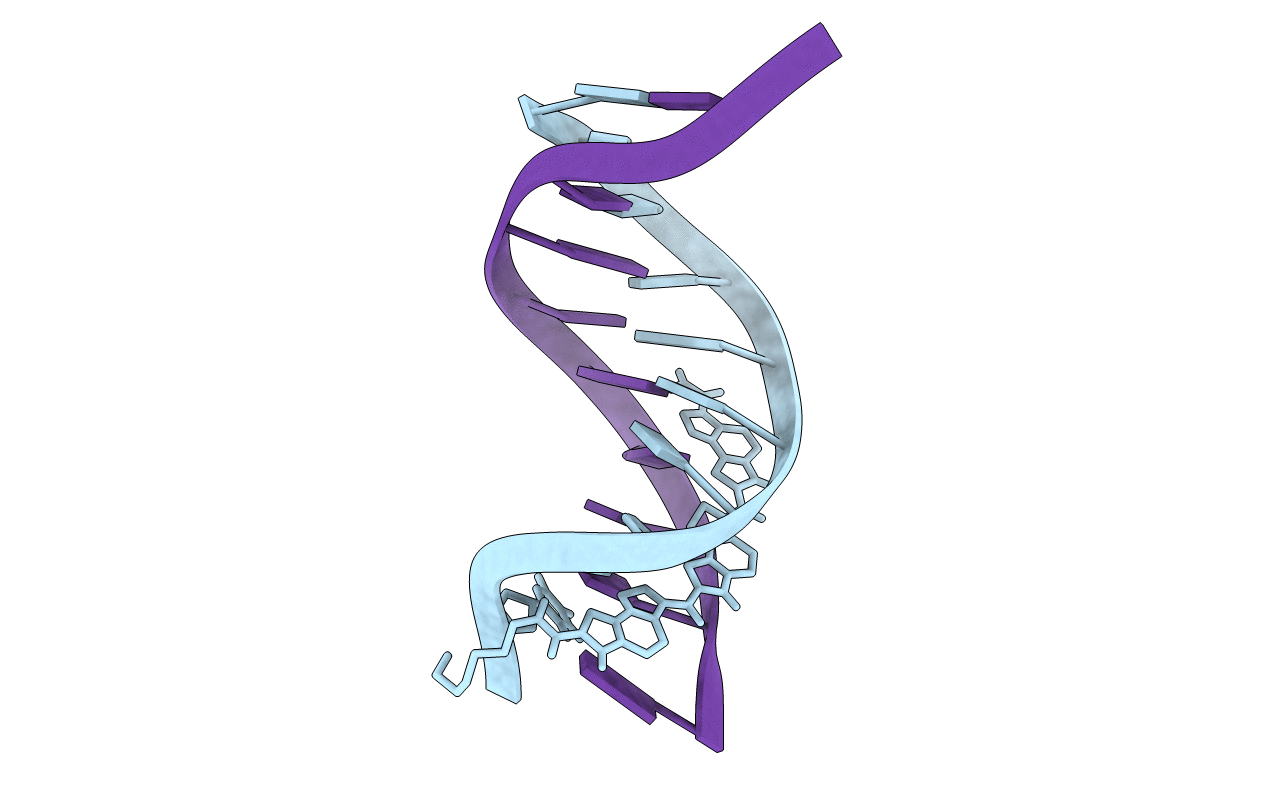
Deposition Date
1997-08-29
Release Date
1997-12-24
Last Version Date
2024-05-22
Entry Detail
PDB ID:
1AUL
Keywords:
Title:
SOLUTION STRUCTURE OF A HIGHLY STABLE DNA DUPLEX CONJUGATED TO A MINOR GROOVE BINDER, NMR, MINIMIZED AVERAGE STRUCTURE
Biological Source:
Source Organism:
Method Details:
Experimental Method:
Conformers Calculated:
6
Conformers Submitted:
1
Selection Criteria:
LEAST RESTRAINT VIOLATION


